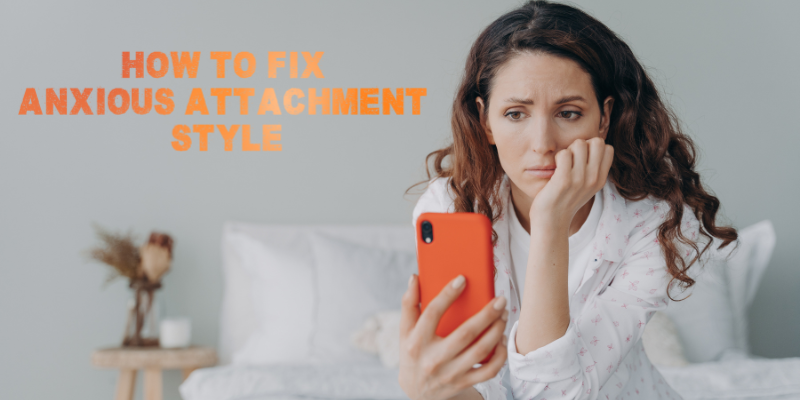How To Fix Anxious Attachment Style
Do you find yourself worrying that people will leave you? Do you often feel "too much" or fear that you're not enough? You might be dealing with anxious attachment, a common but painful relational pattern that can impact how you connect with others, especially in romantic relationships.
The good news? You can heal.
Understanding where anxious attachment comes from, and how to work through it, can lead to more secure, balanced, and fulfilling relationships. Here's how to start the journey toward secure attachment.
What is Anxious Attachment?
Anxious attachment is one of the four main attachment styles (secure, anxious, avoidant, and disorganized). It typically develops in childhood when caregivers are inconsistent—sometimes emotionally available, other times not. This unpredictability teaches the child to stay on high alert for signs of abandonment or rejection.
As adults, people with anxious attachment often:
Crave closeness but fear intimacy won't last.
Overanalyze texts, conversations, or silences.
Feel unworthy of love unless constantly reassured.
Become overly accommodating or self-sacrificing to keep someone close.
To learn more about the attachment styles and determine which style relates closest to your experiences check out our post on the psychology of attachment styles.
How to Fix Anxious Attachment Style
Healing doesn't happen overnight, but change is absolutely possible. Here’s how to start shifting toward a more secure attachment style:
1. Build Awareness Without Shame
Recognize your patterns without beating yourself up. Anxious attachment is a survival strategy you developed for good reason, it helped you cope with inconsistency as a child. Awareness is the first step toward transformation.
✦ Try this: Start journaling after triggering moments.
Ask yourself:
What did I feel?
What was I afraid would happen?
How did I respond?
This builds insight into your emotional patterns.
2. Challenge Core Beliefs
Many people with anxious attachment carry unconscious beliefs like “I’m too needy” or “I’ll be abandoned if I speak up.” These beliefs drive anxious behaviors.
✦ Try this: When a fear arises, ask:
Is this feeling based on current evidence or past wounds?
Reframe with compassionate truths, like: I am allowed to need connection or The right people won't leave when I express myself.
3. Regulate Your Nervous System
Anxious attachment activates the nervous system—especially when you're waiting for a text or fearing rejection. Calming your body helps you respond rather than react.
✦ Try this: Practice breathwork, grounding exercises, or self-soothing techniques. Activities like yoga, walking in nature, or even holding a warm mug can bring your system back into balance.
4. Set Boundaries (Even with Yourself)
Contrary to what your attachment system may tell you, love doesn’t require merging with others. Healthy relationships include space.
✦ Try this: Give yourself permission to not text immediately, or to take a pause when you feel overwhelmed. These micro-boundaries build trust in your ability to self-regulate.
5. Seek Secure Relationships
Healing anxious attachment in isolation is difficult. Surround yourself with people who offer consistent, respectful connection.
✦ Try this: Look for friendships or relationships that are emotionally safe. If someone respects your boundaries, communicates clearly, and doesn't punish you for expressing needs, they can help rewire your attachment system.
6. Work with a Therapist
Attachment wounds run deep, and working with a trauma-informed therapist can help you heal at the root. Therapy provides a safe space to explore your attachment history and build new relational experiences in real time.
✦ Anxious attachment isn’t a life sentence. It’s a pattern, and all patterns can be changed with patience, and the right support. Healing is about learning to feel safe with yourself, trust others gradually, and create connections where you don’t have to perform to be loved.
You are not too much. You are not broken. You are worthy of the kind of love that doesn't make you question your value.
Looking for support?
At Discover Your Path LLC, we specialize in attachment-informed therapy. If you're ready to start healing your anxious attachment, reach out today, we’re here to help you build secure, fulfilling relationships from the inside out.
